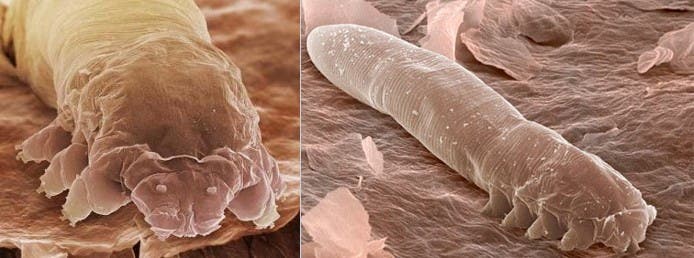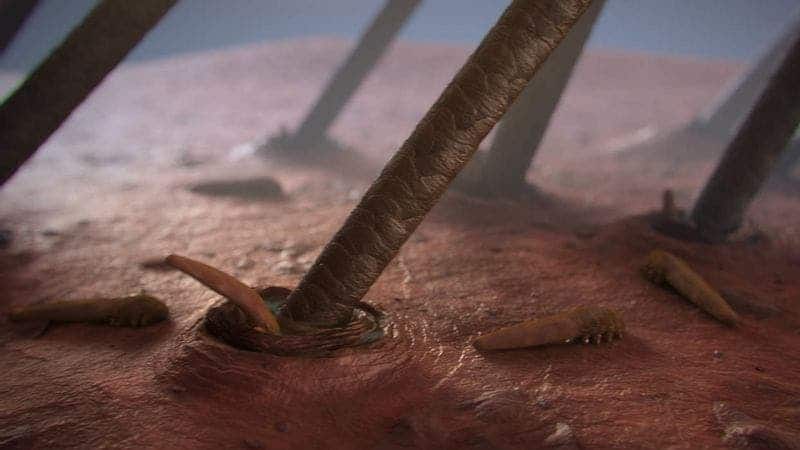For more than 200,000 years humans and face mites trace a common history. There’s no human that doesn’t feed these tiny arachnids with some of our delicious face oils, which might startle some. Fret not since these are mostly harmless (though some people are more sensitive to the mites and get rosacea and blepharitis). What’s startling for some academics, however, is that despite these mites are so widespread and considering their tied history to humans, the animals are very poorly studied. A group of researchers is only beginning to scratch the surface, but already the findings are insightful: people have distinct face mice populations based on where they can trace their ancestry (Europe, Africa, Asia, etc). These mites stay in the family it seems, since they very rarely transfer across other humans.
“It’s shocking that we’re only just discovering how deeply our histories are shared with the mites on our bodies,” says Trautwein, who has traveled the world to sample mites and learn more about their cryptic lives. “They aren’t just bugs on our faces, they are storytellers. Mites tell us about our own ancient history—it’s a complex story, and we’ve only just scratched the surface.”
There are two species of face mites: Demodex folliculorum and Demodex brevis. Both microscopic animals look similar to one another, akin to a plug with legs. Usually, these are referred to as eyelash mites, though Demodex is greek for “fat wood warm”. That’s because the worms looove fat. Yum!
Michelle Trautwein at the California Academy of Sciences and colleagues sampled mites from 70 American volunteers, but of various ancestry. They took samples by drawing the curved end of a bobby pin across a participant’s forehead; in others, metal laboratory spatulas were used to take samples that included a mix of hair and skin cells (including mites) from cheek and outer nose. The researchers then sequenced the DNA of the mites collected from the participant’s faces.
Genetic analysis revealed Demodex folliculorum comes in four distinct lineages: A, B, C, D.
“We discovered that people from different parts of the world host different mite lineages,” says Trautwein. “The continent where a person’s ancestry originated tended to predict the types of mites on their faces. We found that mite lineages can persist in hosts for generations. Even if you move to a faraway region, your mites stick with you.”
For instance, people of Asian descent had mites groups B and D, while those of European ancestry almost exclusively harbored D. People of African and Latin descent had all four groups of mites on their faces.
What’s odd is that these participants don’t come from Asia or Africa. Most of them were born in the United States, as their families members had been for generations, yet the mite populations remained distinct no matter where they lived. This suggests that the mites are spread to family members, but don’t mix outside the family.
Interestingly enough, these seemingly unimportant mites confirm the “Out of Africa” hypothesis – the leading explanation for human early migration that says the first homo sapiens left on a journey that will see them colonize the entire planet from a starting point in central Africa. The four mite lineages diverged from each other at least 200,000 years ago, in parallel with the rise of our own species or perhaps even earlier. “They’ve likely been with us through all of our history,” says Trautwein.
Trautwein now hopes to study these parasites a multi-year project sampling arthropods (and collecting mite samples) alongside citizen scientists in homes on all seven continents. The expedition will see the researchers travel to Sweden, the Peruvian Amazon, and houses in the Academy’s own San Francisco backyard. Ultimately, these little beasts which have piggybacked our faces since the dawn of mankind might shed some incredible secrets.
Article corrected for typos.











